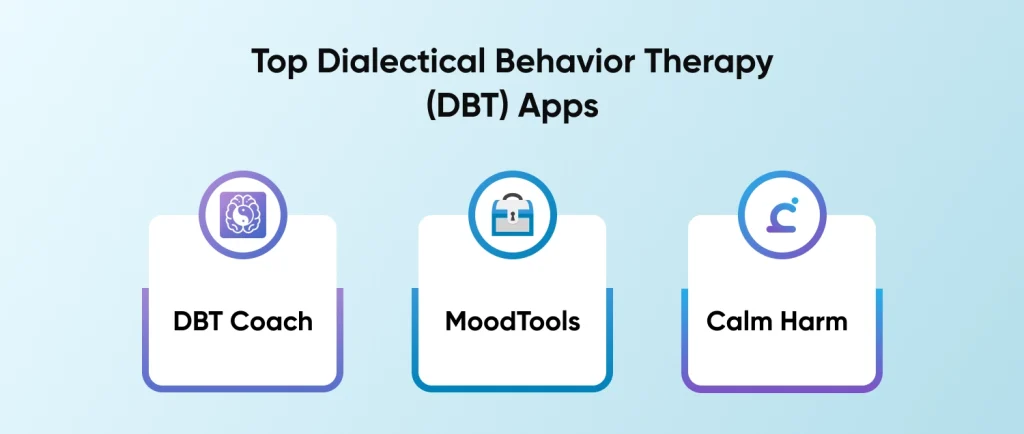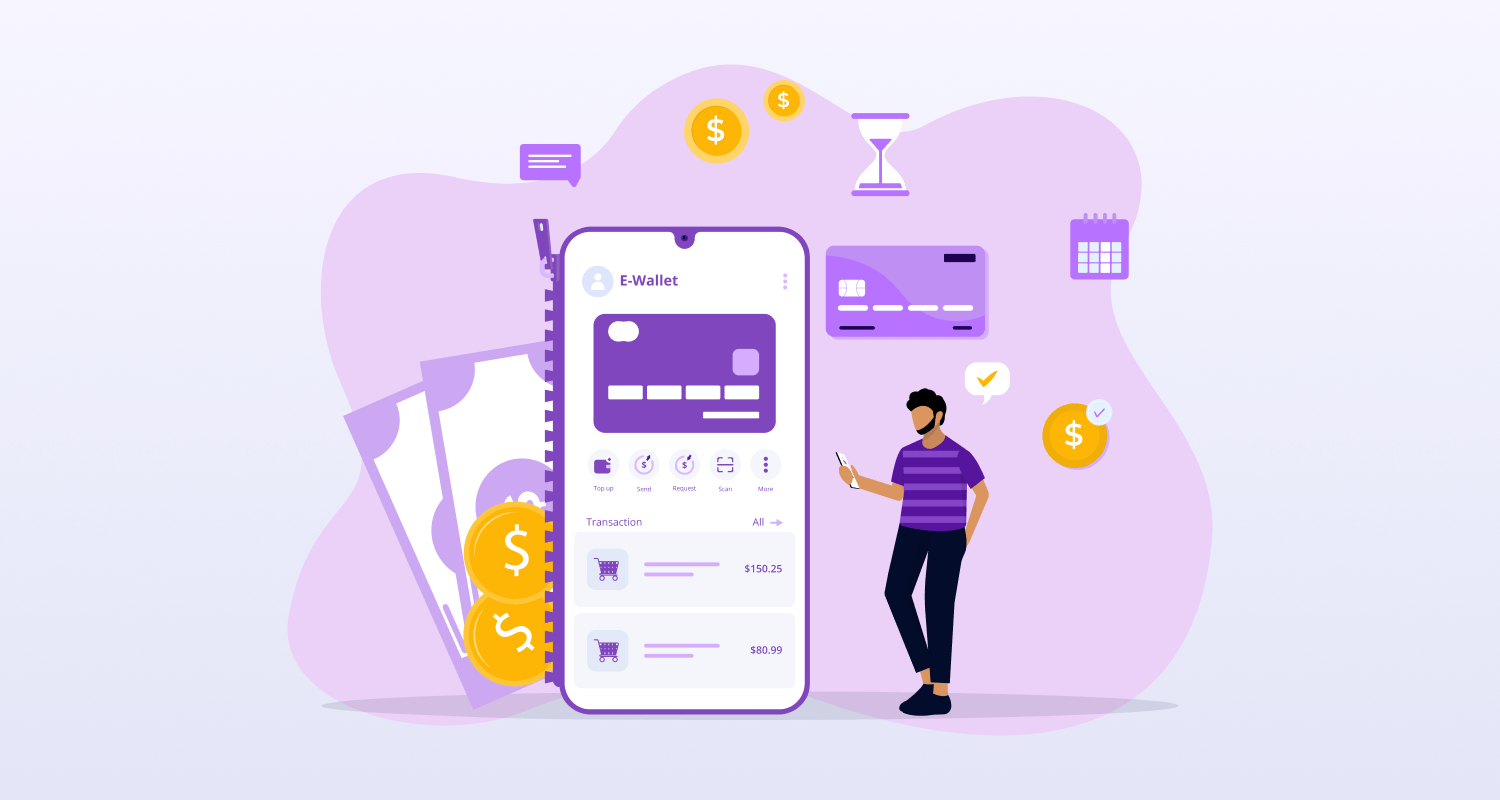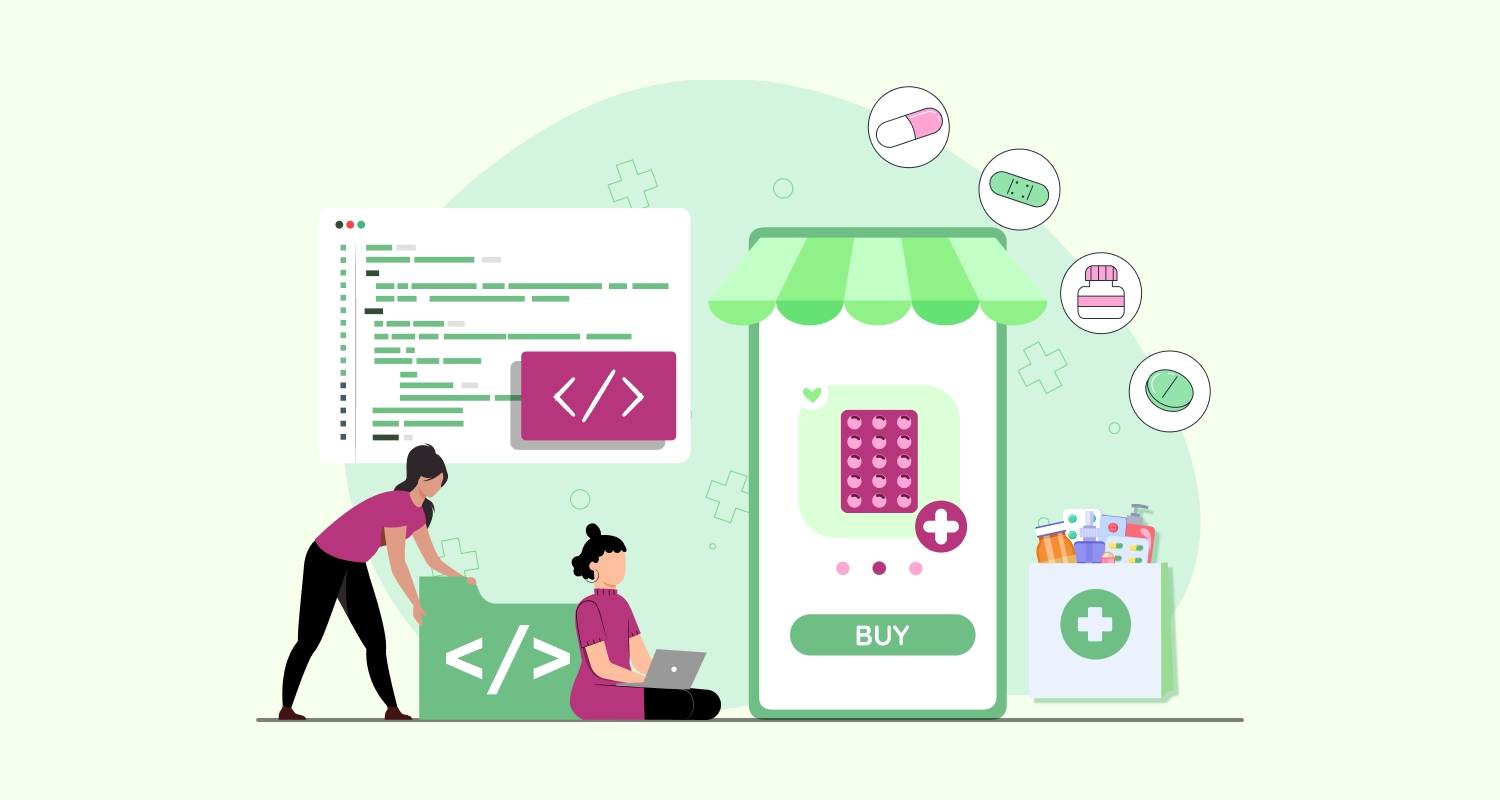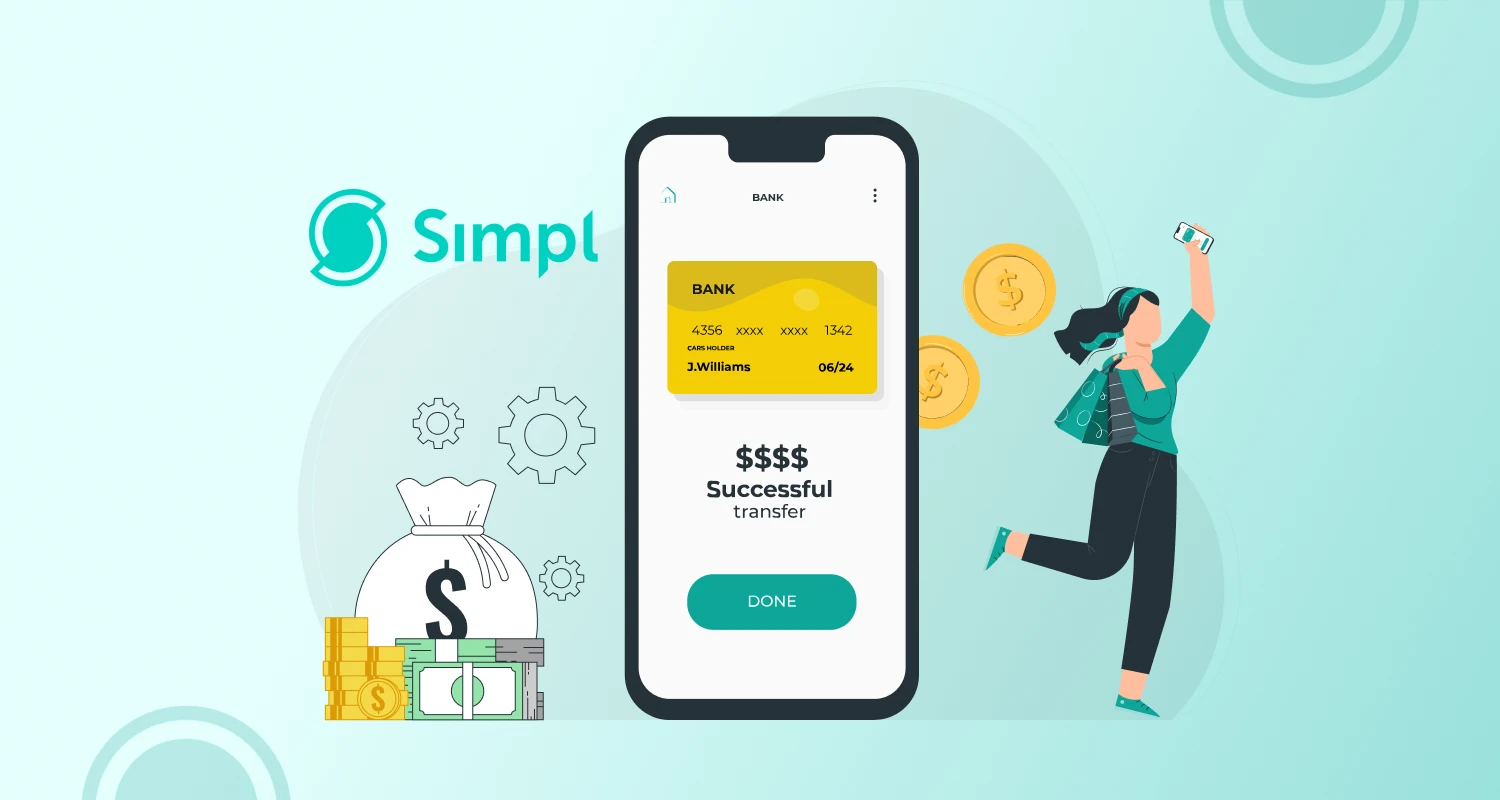There is a huge need for apps like DBT today due to the fast-paced lives of people. Dialectical behavior therapy is a well-known therapy used to treat people with medical health disorders. These conditions usually trigger emotional and interpersonal control. They are more stressed and have less tolerance towards anything in their life.
If you are also looking to heal and help people by developing a DBT app or a web app then here’s the blog for you. We have listed the steps for Dialectical Behavior Therapy app development in the quickest way possible.
These applications are an invaluable tool for anyone looking to better manage their anxiety, strengthen their relationships, handle strong emotions, or practice mindfulness. Hire mobile app developers and make DBT applications that enable on-the-go therapy. For those who might not have easy access to traditional therapy settings, these apps will offer a practical and confidential means of receiving DBT skills, advice, and support, hence increasing accessibility to therapy.
Step to Create a Dialectical Behavior Therapy (DBT) Professional Practice Web and Mobile App
More than simply code is needed while developing a DBT therapy app; meticulous planning is also necessary. This section takes you step-by-step process for Dialectical Behavior Therapy web development and mobile app development. It describes how to create a health app that is easy to use.
Understanding the Requirements
Your decision about which platforms to use will depend on whether your app is intended for adults, teens, or seniors. Building a mental health app requires careful consideration of your target patient base to create experiences that are pertinent and engaging. Among the topics to look into when conducting research are:
- Determining the client age group that the app is intended to assist
- Competitor research in defining the expectations of the target audience
- Create a profile of a typical patient.
- Ideally, a couple of your TA’s clients will take part in the following phase and assist you in focusing on the solution’s UX/UI.
Planning and Design
You can begin creating a list of needs once you’ve decided on the concept for your upcoming application and have done extensive market research. Both future product requirements and healthcare app development requirements should be included in this list.
Make a list of the features you want your mental health app to have, then test it with a prototype. You can save costs by ten times by starting with a prototype instead of going straight into product development, and you can also shorten the time it takes to construct your app. In essence, you may use zero coding to evaluate your business idea.
Please be aware that to confirm the technical viability of the presented designs, developers should participate at this point as well.
Alternatively, you can choose a no-code scenario at this point and assemble a prototype for testing using pre-made interface components. Here, test users will utilize their mobile devices to evaluate the app.
Choose the Right Technology and Team
Alternatively, you can choose a no-code scenario at this point and assemble a prototype for testing using pre-made interface components. Here, test users will utilize their mobile devices to evaluate the app.
You may use your mindfulness and meditation app on iOS and Android devices. It will, however, undoubtedly raise the price of app development. Hence, you can only create an iOS or Android app if your budget is tight. Subsequently, you can optimize your service to run on an additional platform. Learn how much it costs to produce an iOS or Android app by reading this.
Web Technologies: Hire web developers, well-versed and experienced in languages and frameworks (such as React, Angular, and Django) that are appropriate for web development.
Mobile Technologies: Cross-platform versus native development (e.g., Flutter/React Native for both iOS and Android or Swift for iOS).
Backend and Database: Choose the right databases (like PostgreSQL, and MongoDB) and backend technologies (like Node.js).
Creating a DBT mobile app from the ground up requires the appropriate team of developers, project managers, and QA specialists. Consider outsourcing the development of a treatment app to a business with prior expertise working on health-related projects if you lack an internal development team capable of creating compliant software that satisfies legal requirements such as GDPR or HIPAA.

Development Process
The majority of the work is done during the development stage. It is recommended to adhere to agile principles and conduct interim tests at each iteration. The following are some pointers for effective development:
- For healthcare apps, use third-party HIPAA-compliant audio/video calling SDKs.
- Use pre-made elements, such as voice messaging in chat, to speed up delivery.
- To expedite development, set up a DevOps pipeline.
- Observe HIPAA requirements and cybersecurity best practices.
To cut down on development time and expenses, work with mobile app developers who specialize in utilizing readily accessible components and libraries for common app features like scheduling, messaging, authentication, and other features while creating mental health apps.
Integrating Core Features:
- Diary Cards: Allows users to record their everyday feelings, actions, and abilities.
- Interactive modules designed to teach DBT techniques for skill development.
- Exercises for Mindfulness: Audio and video content for mindfulness practice.
- Crisis Management Tools: Features like distress tolerance tools and emergency contact buttons.
Test and Quality Assurance
It’s a good idea to test the app while it’s still being developed because it can help keep the wrong product off the market.
Before the solution is made public, a substantial testing effort is described in this step. For instance, the following tests would need to be carried out:
- Functional testing verifies that your application satisfies the authorized functional criteria.
- Testing for compatibility verifies that your application can function on a range of mobile devices, in a variety of network scenarios, and on hardware and operating systems.
- Usability testing: Participants from the target audience, both internal and external, are included in this type of testing. This is done to make sure your software works well and changes to meet the needs of users. It is necessary to complete these tests precisely and in detail.
- Interface testing: This is to check the module interactions correctly working and that failures are handled effectively if any.
- Performance testing: The purpose is to assess the app in terms of scalability and use it without any glitches.
The practice of hacking your software to look for any potential vulnerabilities is called security testing. It entails confirming the SSL certification and examining the network’s security precautions.
Deployment and Maintenance
Your software is prepared for release once testing is complete. Start a mobile marketing campaign in conjunction with the app’s release following a successful app store submission. Utilize in-app analytics tools that were put in place during development to keep an eye on performance, respond to user comments, address bugs, and maintain app updates. You can reduce maintenance expenses by implementing a strong DevOps approach with the help of CMARIX.
Additionally, by utilizing user interaction data to pinpoint growth areas and make long-term improvements to your mental health app, our professionals can provide continuing support and upgrades.
These are the fundamental procedures for developing a mental health app, but what crucial components must it include to function?
Future Enhancements
DBT applications are one of the best examples of how the face of mental health treatment is evolving due to the advancement of technology. These applications offer constant, unobtrusive, and easily available support, bringing the advantages of therapy into daily life. By incorporating DBT concepts, individuals can actively manage their mental health, encourage good behavioral changes, and improve their emotional stability. DBT apps mark a substantial leap in mental health treatment, making therapy more accessible and effective than ever before, and they have the promising potential to continue to advance in the future.
AI has a wide range of applications in telehealth, from patient monitoring and IT for healthcare to diagnosis support and data analysis. It provides a better patient experience and better health outcomes by using data-driven, real-time decision-making, which enables virtual care options with a care continuum.
Virtual reality (VR) technology enhances exposure therapy, a DBT component that helps clients face their fears and cut back on avoidance behaviors. Virtual reality exposure therapy provides a secure and effective way for patients to rehearse techniques and get over fears by letting them engage in lifelike, controlled environments that replicate real-world situations.
Top Dialectical Behavior Therapy (DBT) Apps

Here are some of the best mobile and web apps for DBT. We can help you with the required web development services to create a similar app to the one below.
1. DBT Coach App
With a plethora of features, the behavioral DBT Coach app offers users a variety of tools and approaches to improve relationship building, emotion control, and distress management. It provides diary cards, coaching features, guided courses, and a large reference library. By directly delivering DBT techniques and assistance to users’ mobile devices, DBT Coach seeks to empower people by increasing the accessibility and convenience of therapy.
2. MoodTools App
MoodTools is to deal with depression and mood disorders. It includes elements of DBT along with other research-proven methods to provide people with a range of tools to improve their emotional health. Elements like thought challenges, relaxation techniques, mood tracking, and educational materials help users better understand and control their emotions.
3. Calm Harm App
Calm Harm is a cutting-edge mental health program designed to counteract self-harming behaviors. It offers a variety of DBT-informed techniques and activities to assist individuals in managing their pain and learning more constructive coping strategies. The app provides users with a private, safe space to test out various coping mechanisms for difficult emotions and desires to encourage empowerment and self-care.
Conclusion
As a leading mobile app development company, we have developed various apps like the above listed. Our team of developers at CMARIX is skilled and expert in creating healthcare applications.
So do get in touch with us if you have any other intriguing app ideas. Our professionals will develop your idea and provide the greatest mobile app development services for mental health.







